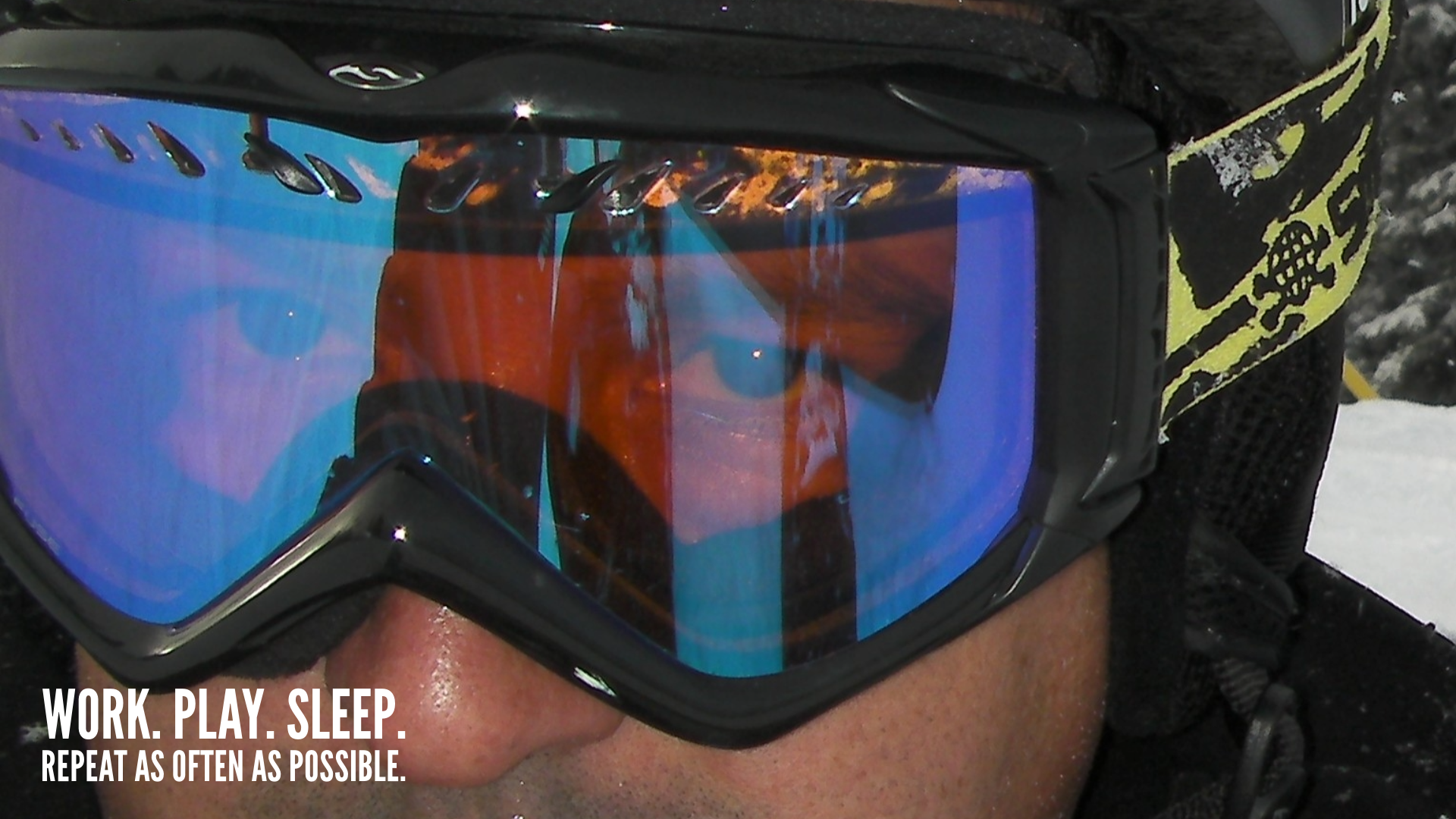Guess how many I have been to? (Patrick Smyth – home breaks Santa Catalina Panama and Tamarindo Costa Rica)
Jeffreys Bay
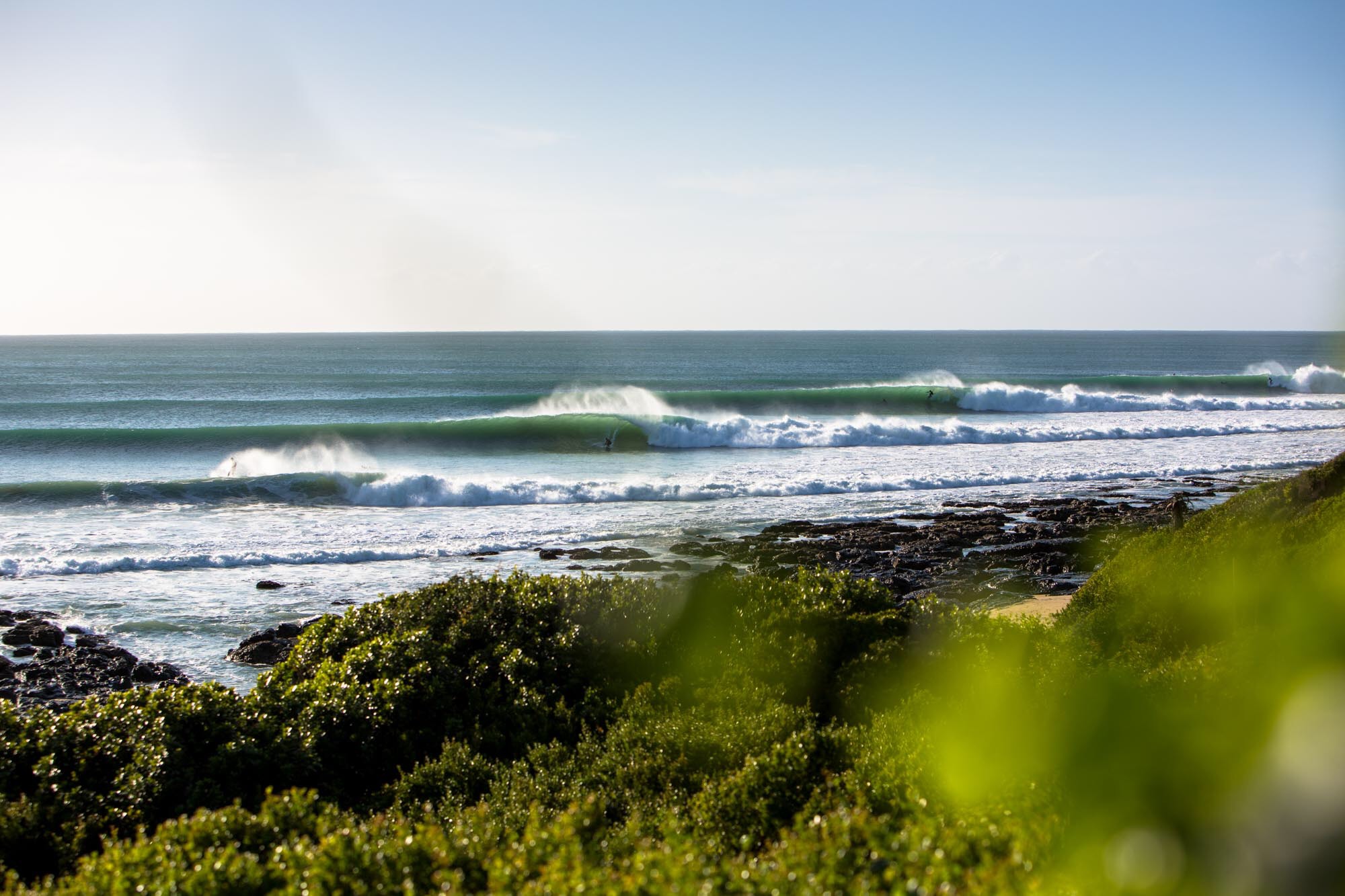
Photo: Alan van Gysen
When it comes to perfection, matched by high-performance possibilities, few pointbreaks shake a stick at South Africa’s Jeffreys Bay. At its best, the wave is a speeding blur of hollow sections, wide-open walls, and a grooming offshore wind. Professional surfing history at J-Bay runs about as deep as any other competitive tour stop on earth; from Terry Fitzgerald to Shaun Tompson, Curren to Occy, Slater to Fanning – they’ve all etched their names on the fabled walls of J-Bay. And because of this rich history, complemented by the undeniable perfection, it’s no wonder why J-Bay is one of the foremost bucket-list pointbreaks for surfers the world over.
When to go: The southern hemisphere winter (May to September) is the primetime for surf at J-Bay. That’s when South Atlantic/Southern Ocean storms pass close to South Africa and deliver those ideal south/southwest swells to the famed righthander.
KNOW BEFORE YOU GO: Jeffreys Bay Surf Forecast
Malibu
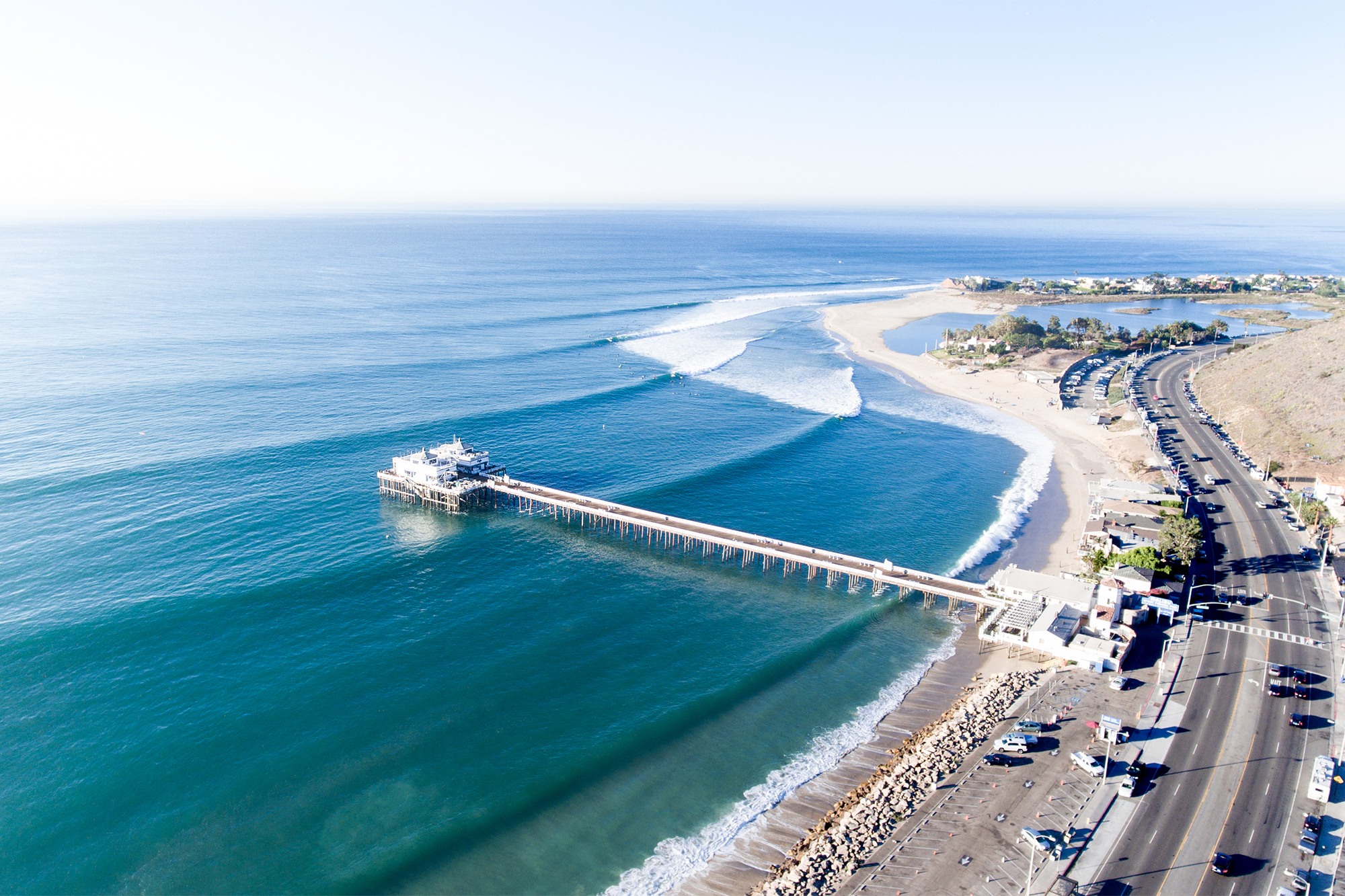
Photo: Dylan Decker
When I lived in Los Angeles, driving up the PCH to surf, I always drove past this spot. Too crowded. What Malibu lacks in hollowness, it makes up for in surf history legend. For decades, this was the epicenter of progression in surfing and surfboard design – think: Miki Dora and hotdogging, or Dale Velzy and the “pig” (a predecessor of the modern surfboard). And in fact, the famed righthand pointbreak has such a rich history that, as of 2018, it was officially recognized by the United States government on the National Register of Historic Places – a list of landmarks which includes the likes of the “Welcome to Las Vegas” sign and the birthplace of George Washington. How’s that for a surf spot?
When to go: The ‘Bu really comes alive – with the takeoff spots at First, Second, and Third point firing on all cylinders – during south/southwest swells typically seen during the California summertime. And occasionally, waves will break all the way through to the pier (see: Laird Hamilton on a SUP).
WATCH LIVE: Malibu Overview Surf Cam
KNOW BEFORE YOU GO: North Los Angeles Regional Surf Forecast
Chicama

Photo: Ben Kottke/A-Frame
I have been here. Amazing time with Joe and a bunch of friends from https://witchsrocksurfcamp.com/
The wave at Chicama holds the honor of being the first surf spot to be protected by national law. In 2016, a Peruvian law was instated prohibiting any building within one kilometer of the wave at Chicama, which may impact the shape of the wave or the wind. (During the 1980s, another iconic Peruvian surf spot, La Herradura, was damaged by a construction project on the beach; a stinging reminder prompting local surfers to push for the legislation at Chicama). And now, the impossibly long pointbreak at Chicama – which some claim is the longest wave in the world – will be preserved for the foreseeable future, much to the delight of traveling surfers looking for a serious case of Jell-O thighs.
When to go: Puerto Malabrigo, the town home to Chicama, lies in the northern portion of Peru. And here, the south swell season is most consistent (April through October). It also needs a big swell to wrap into the bay.
KNOW BEFORE YOU GO: Chicama Surf Forecast
Rincon
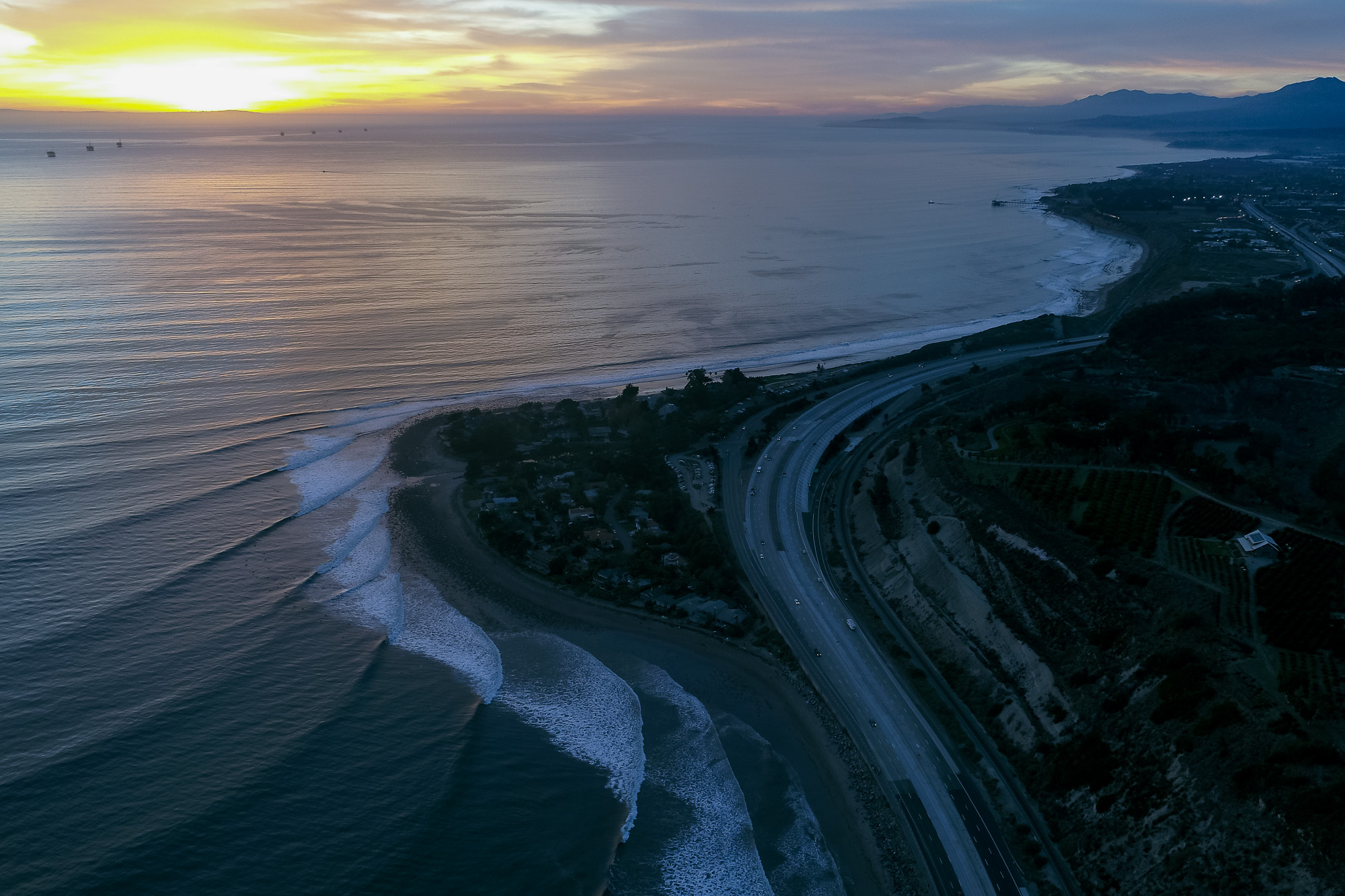
Photo: Jeremiah Klein
I found it to be always crowded. Heck most popular breaks are like this now. The Queen of the Coast, the crown jewel of California – these pseudonyms are overused, yes. But are they true? Also yes. As far as world-class pointbreaks go, Rincon is the best California’s got. And when it’s on, it’s also one of the best pointbreaks in the world. But because of that superior quality, the lineup at Rincon can get incredibly crowded during a large winter swell. The crowd is somewhat mitigated, however, by the different takeoff zones – Indicator, the Rivermouth, and the Cove. And not to mention, it’s pretty rare for someone to ride a wave all the way from the top of the point to the inside near the freeway (unless your name is “Tom Curren”).
When to go: Winter and fall is when west/west northwest swells sneak past the blockading Channel Islands and around Point Conception, funneling into the lineup at Rincon. As for the Cove, the more west (and sand) the better.
KNOW BEFORE YOU GO: Rincon Surf Forecast
Raglan
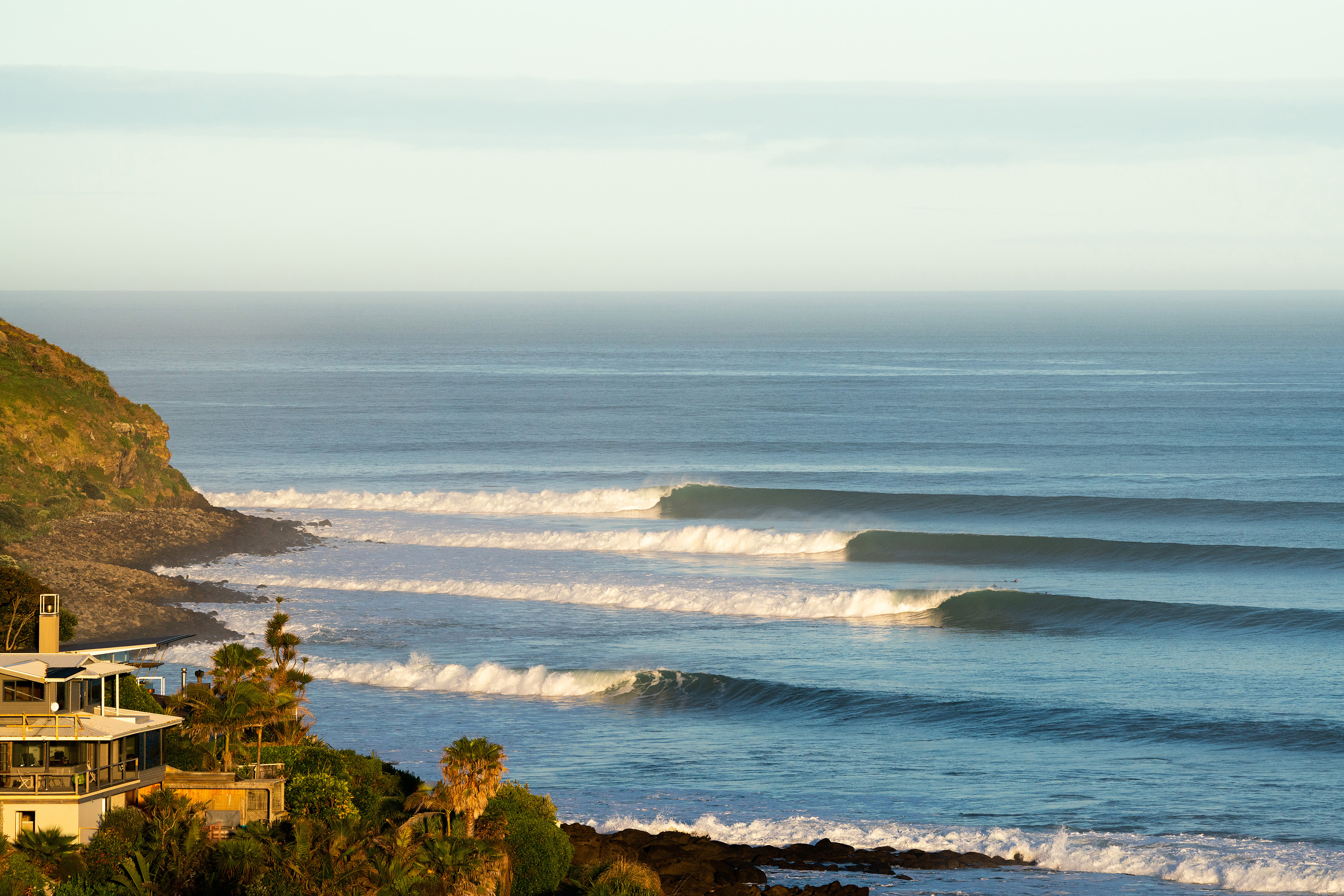
Photo: Rambo Estrada
New Zealand is a country swimming in natural beauty, so, it makes sense that there’d be a natural phenomenon like the lefthander at Raglan. With multiple takeoff spots – Indicators, Whale, and Manu – the pointbreak at Raglan in Manu Bay offers something for every type of surfer. There’s speedy sections, a rippable lip-line, the occasional tube, and even soft rollers in the bay. But beyond the variety, the most striking thing about Raglan is the consistency of quality surf – you can pretty much catch a wave at Raglan year-round, although there’s a specific window if you really wanna score. For more on specifics, see below.
When to go: It’s tough to get skunked in New Zealand, and Raglan in particular. But as far as consistency goes, the Southern Hemisphere spring (September to November) is a very safe bet. The only thing to watch out for is a prevalent south/southwest wind.
KNOW BEFORE YOU GO: Raglan Surf Forecast
Punta de Lobos
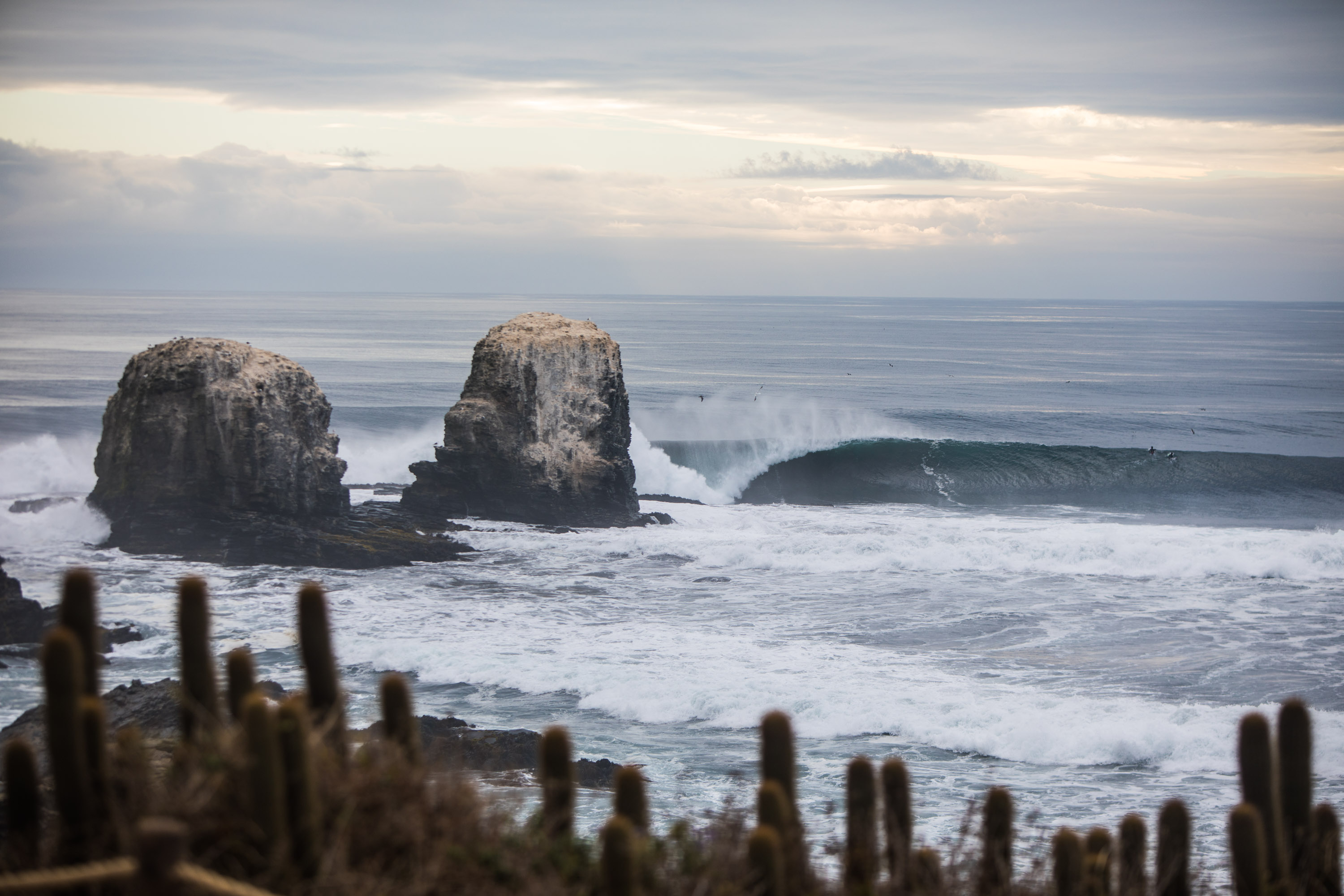
Photo: Rodrigo Farias
More than most spots on this list, Chile’s iconic Punta de Lobos is as much known as an XXL hotspot as it for its buttery perfection. However, even when it’s maxing out, the wave is relatively inconsequential compared to, say, maxing out Teahupoo. This is because the wave is more of a giant roller, versus a bowling slab. But that’s not to say that there’s still a lot of water moving around when the wave gets well above double-overhead (which it can handle with ease). When it’s under double-overhead, Lobos really turns on – the lineup moves further in, the middle section features long walls and tubes, and rides spanning 200 yards are not unheard of. Adding to the perfection, the looming cliffs protect the wave from the dreaded – and almost daily – southwest wind. (Think Steamer Lane in reverse.)
When to go: Year-round south to southwest swells hit the Chilean coastline from Antarctica lows, so consistency is not an issue. But if you’re really not trying to get skunked, then the Southern Hemisphere winter (June-August) is a reliable sweet spot.
KNOW BEFORE YOU GO: Punta de Lobos Surf Forecast
Anchor Point
Since it was first discovered and surfed by Aussies in the 1960s, Anchor Point in Morocco has changed quite a bit. First of all, there’s a lot more heads in the water (and expectedly so; when it’s on it’s a world-class righthander). And secondly, the town has boomed to cater to traveling surfers (some have compared it to the Moroccan version of Rosarito, without the booze and strip clubs). But the wave itself still produces some of the dreamiest righthand walls available in this region of the world – on the day of days, expect a speeding freight-train with more tube sections than photo opportunities whilst riding a camel back on the beach.
When to go: Fall and wintertime is when northwest and west swells funnel down the Moroccan coast and into the pointbreaks around the town of Taghazoute. This is also the time – winter especially – when offshore winds groom the lineup with a northeastern breeze.
WATCH LIVE: Anchor Point Surf Cam
KNOW BEFORE YOU GO: Northern Morocco Regional Surf Forecast
Barra de la Cruz
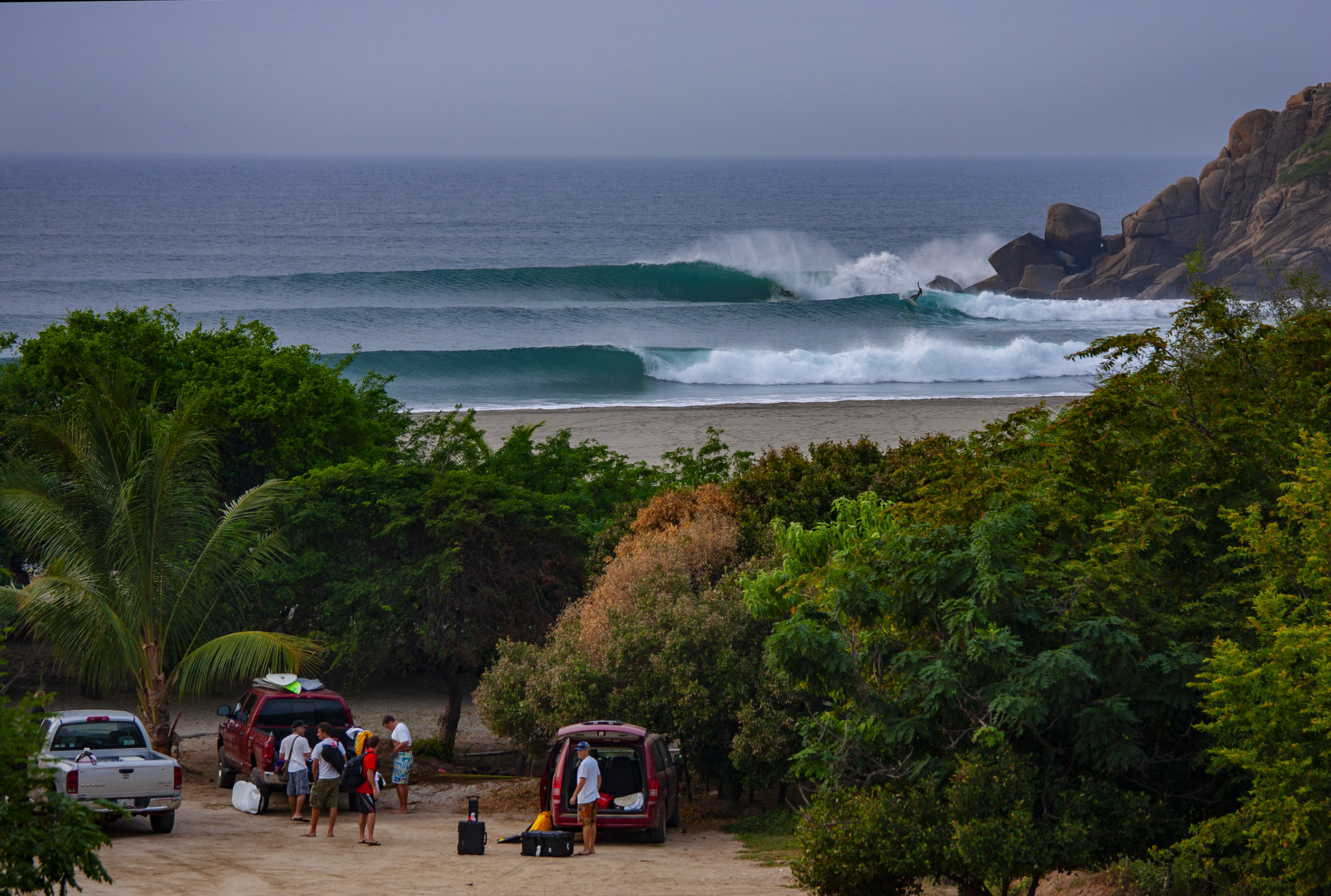
Photo: Aaron Chang
Once a well-kept secret by locals and traveling surfers in the know, Barra de la Cruz (or simply “Barra”) and the neighboring point of Salina Cruz have since been exposed to the surf world multiple times over. Blame it on the endless stream of images in surf publications, all bearing the same caption: “Somewhere in Mexico.” Or more likely, blame it on the 2006 Rip Curl Search held at Barra – aka some of the best waves ever seen in a CT event. That’s when the clips and pics of Andy Irons, Slater, Taylor Knox, et al proliferated and the secrets of the sand-bottom barrels at Barra were hush-hush no longer. But still, the wave continues to mesmerize.
When to go: While they’re not quite as powerful as Puerto Escondido to the northwest, April to October is when south and southwest swells travel towards eastern Oaxaca and awaken the waves at Barra and Salina Cruz.
KNOW BEFORE YOU GO: Huatulco Regional Surf Forecast
Kirra
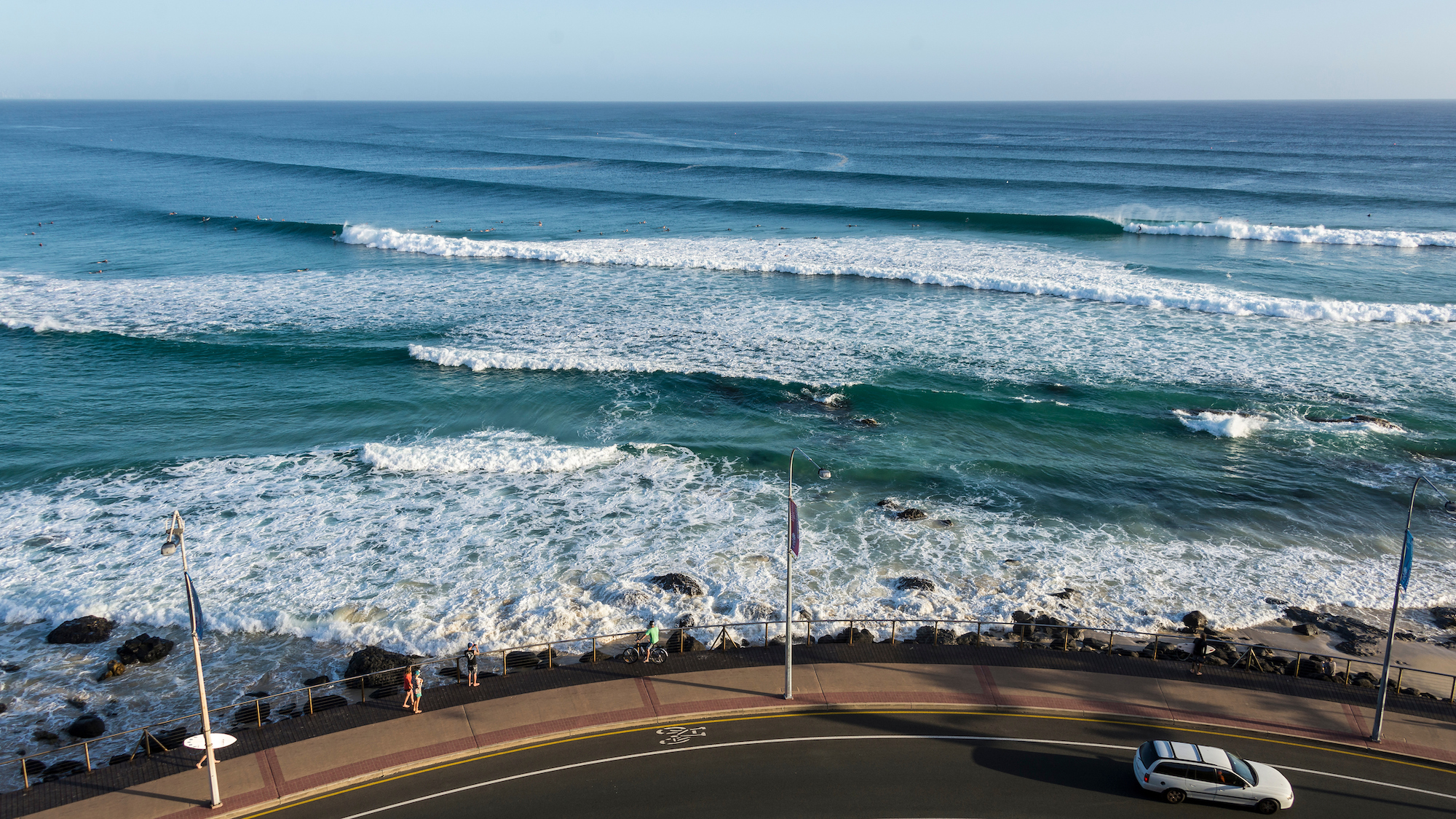
Photo: Joli
“The world’s best wave?” asks Nick Carroll. “Could be. It’s up there.” Capping off the northern edge of Queensland’s famed Coolangatta, there’s the sand-bottom righthander at Kirra Point. The wave is a product of two rock groins, at either end of Kirra Beach, which bookend the sandbar and the supertubes that come careening off it. To get an idea of how perfect the wave can be, just look to Shane Beschen and his perfect 30-point heat total from 1996 (of course, that was back when the top three waves comprised a heat total, not two) or Griffin Colapinto’s perfect 10 at the 2018 Quik Pro. But alas, nowhere is truly perfect; since Kirra lies within one of the most populous surf regions in the world, when it turns on, it’s always elbow-to-elbow crowded.
When to go: Southern hemisphere fall and winter are the main times to score the coveted east/northeast swells from lows stationed in the Tasman Sea. And occasionally in summer (December to April), there’s the rare cyclone swell from the Coral Sea.
KNOW BEFORE YOU GO: Gold Coast Regional Surf Forecast
Skeleton Bay
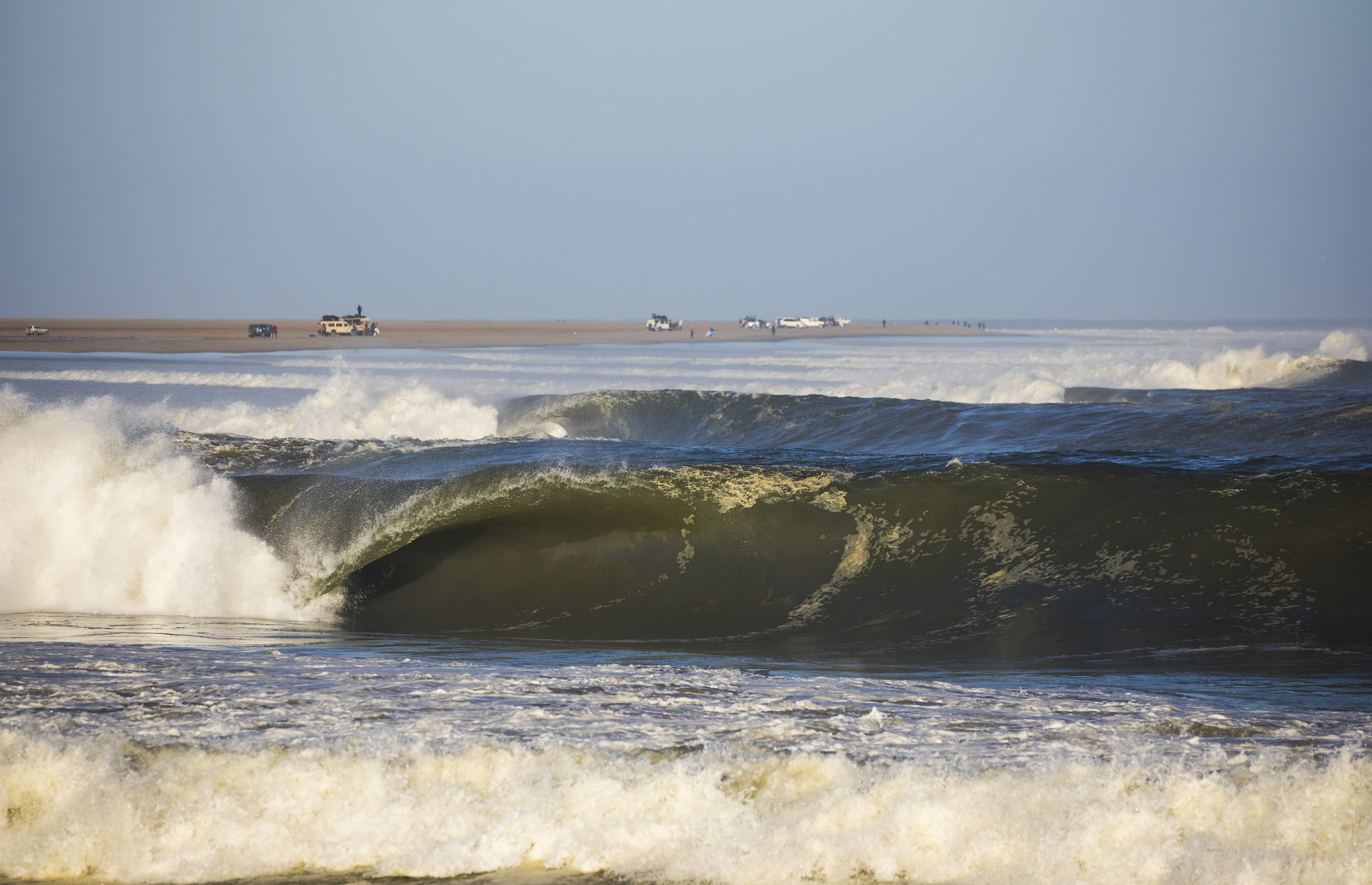
Photo: Travis Kuhlman
Wavepools may be on the rise, but Skeleton Bay is making a case for Team Nature when it comes to the perfection debate. Over the course of a couple years, caravans of pro surfers began visiting the Namibian lefthander and releasing videos, which, in turn, has prompted worldwide salivation from goofy-footers. The wave is sand-bottom, almost-impossibly steep, and endlessly tubing. For, like, a mile-and-a-half…literally. Why do you think you’ve seen so much GoPro footage from Skeleton Bay? It’s because filmers on the beach can’t track a surfer for such a distance. Surfline’s Travis Kuhlman called it: “hands-down the most difficult place to film from the beach.” Yeah, it’s that long.
When to go: Namibia picks up even the smallest of south Atlantic swells, but the most reliable time-frame is May to September. One thing to watch out for, however, is the prevalent and relentless wind.


